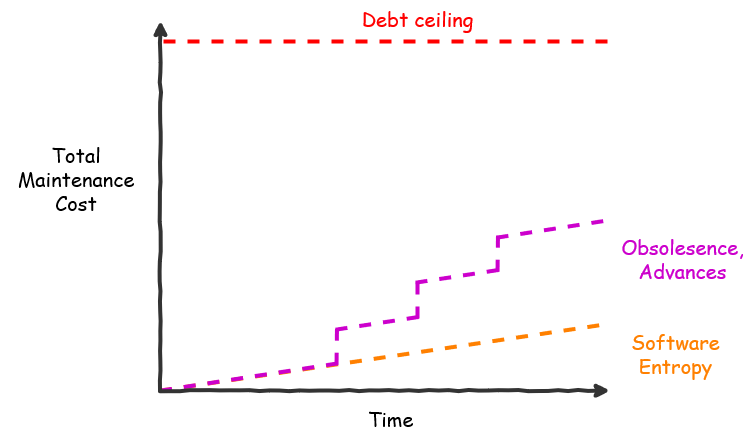Agile software development is about adapting to change, about continuously learning what the customer wants. The team breaks down the solution into small pieces, delivering working software in every iteration that the customer can evaluate and give feedback on. In order to be able to learn faster, the initial releases may sacrifice best practice (in a controlled way), for example, a lack of abstraction, using tightly-coupled modules, hard-coded values, a crude data model, etc. In extreme cases, the developers “build one to throw away” (Fred Brooks). These are all forms of Technical debt (as Ward Cunningham defined the term); deliberate shortcuts in the implementation that we then remove when our understanding has improved.
The key point is that this is a debt that has to be paid back as soon as possible; a short-term loan if you will. Ward describes repaying the debt as using the experience gained from customer feedback to refactor the code to reflect the team’s new understanding of the problem. This chimes well with what Fred Brooks describes as maintaining the Conceptual Integrity of the product. Martin Fowler describes this as Prudent Deliberate debt. Henrik Kniberg calls it Good Technical Debt.
Unfortunately, the world is not perfect and Technical debt is not always repaid (in full). This results in the phenomenon of software entropy; the gradual disorder that arises as the code is modified over time. Martin describes the ways the team can default on their debt in his Technical Debt Quadrant: Reckless Deliberate debt will have to be postponed, and some or all Inadvertent debt will be discovered too late to do anything about within the timeframe of the project. Henrik calls this Bad Technical Debt.
This unpaid Technical Debt now becomes added to the long-term maintenance backlog of the product. This backlog also includes work that results from advances in technology and the deprecation or obsolescence of existing technologies, amongst other things. Meaning, even if we could develop the best possible solution using state-of-the art technologies today, we would still incur debt in the long-term because of obsolescence. This is a long-term loan that must also be repaid as we develop new features.
This long-term debt has also, confusingly, become labelled as Technical debt, a result of semantic diffusion. Uncle Bob addresses this in A Mess is not Technical Debt. This unclear distinction is understandable: from the point-of-view of the Product Owner who is trying to deliver a new feature, it makes no difference if the debt is short-term or long-term, it still has to be paid whether it was incurred as part of the project or as a result of longer-term software entropy or (for example) obsolescence. However, I would argue that Technical Debt is contracted debt, debt that the PO and development team have agreed on incurring as part of the learning process. In that case, long-term debt could be seen as a form of implicit rent.
What can we call this phenomenon of long-term debt? Let’s look at what constitutes it:
- Obsolescence: new versions or EOL for third-party software, engineering competence not available, etc.
- Paradigm shifts that reduce accidental complexity (Fred Brooks, The Mythical Man-Month) (or more intuitively called “incidental complexity”), e.g. Garbage collection
- Software entropy (Unpaid Technical debt): a lot of Reckless Deliberate debt, nearly all Inadvertent technical debt (frequently labelled incorrectly as “accidental complexity”).
All these phenomena affect the viability or vitality of the software solution, in other words we are talking about the technical durability of the solution. If nothing is done we will reach an inflection point (debt ceiling) where it costs too much to develop new features in the existing solution and a fresh start will be needed. Perhaps an appropriate name for all this long-term debt is simply Maintenance Debt.
As Martin wrote, it is the usefulness of these terms that is relevant. We want to distinguish between the Prudent deliberate debt incurred by the project and everything else that requires maintenance. By naming the longer-term debt as Maintenance Debt we can return Technical debt to its original definition: a short-term debt that is deliberately incurred within the context of the project, and which is budgeted for.
In contrast, Maintenance debt encompasses long-term debt which the team have little control over, may or may not be part of any feature development and most likely has not been budgeted for.

